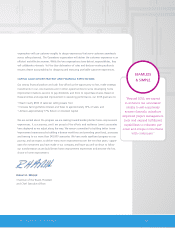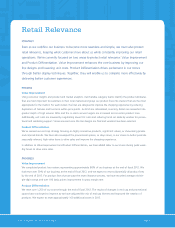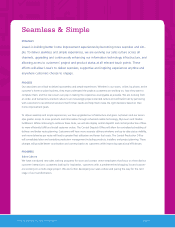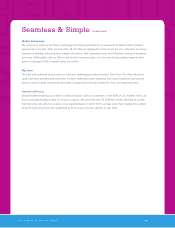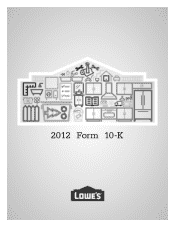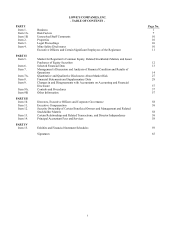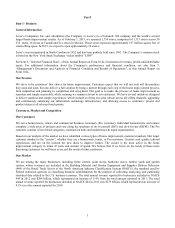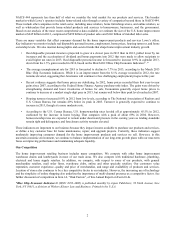Lowe's 2012 Annual Report Download - page 7
Download and view the complete annual report
Please find page 7 of the 2012 Lowe's annual report below. You can navigate through the pages in the report by either clicking on the pages listed below, or by using the keyword search tool below to find specific information within the annual report.
Retail Relevance
STR ATEGY
Even as we redefine our business to become more seamless and simple, we must also protect
retail relevance, keeping what customers love about us while constantly improving our retail
operations. We’re currently focused on two areas to protect retail relevance: Value Improvement
and Product Differentiation. Value Improvement enhances the core business by improving our
line designs and lowering unit costs. Product Differentiation drives excitement in our stores
through better display techniques. Together, they will enable us to compete more effectively by
delivering better customer experiences.
PROCESS
Value Improvement
Using consumer insights and product and market analytics, merchandise category teams identify the product attributes
that are most important to customers in their local markets and group our product lines into clusters that are the most
appropriate for the market. For each cluster, the lines are designed to improve the shopping experience by reducing
duplication of features and functions within price points. As SKUs are rationalized, inventory dollars are reinvested into
greater depth of high volume SKUs and the in-stock service targets are increased across entire product lines.
Additionally, unit costs are lowered by negotiating lower first costs and reducing funds set aside by vendors for promo-
tional and marketing support. Stores are reset once the line designs are final and vendors have been selected.
Product Differentiation
We’ve revised our end cap strategy focusing on highly innovative products, significant values, or showcasing private
and national brands. We have also revamped the promotional spaces, or drop zones, in our stores to better promote
seasonally relevant, high value items to drive sales and improve the shopping experience.
In addition to Value Improvement and Product Differentiation, we have added labor to our stores during peak week-
day hours to drive more sales.
PROGRESS
Value Improvement
We completed product line reviews representing approximately 80% of our business at the end of fiscal 2012. We
had reset over 30% of our business at the end of fiscal 2012, and we expect to reset substantially all product lines
by the end of 2013. For product lines that are past the reset clearance process, we have recorded average mid-sin-
gle-digit comps and over 100 basis points improvement in gross margin rate.
Product Differentiation
We reset over 1,250 of our stores through the end of fiscal 2012. The results of changes in end cap and promotional
spaces have continued to improve as we have adjusted the mix of end cap themes and improved the rotation of
products. We expect to reset approximately 160 additional stores in 2013.
Lowe’s Companies, Inc. 2012 Annual Report page 5





